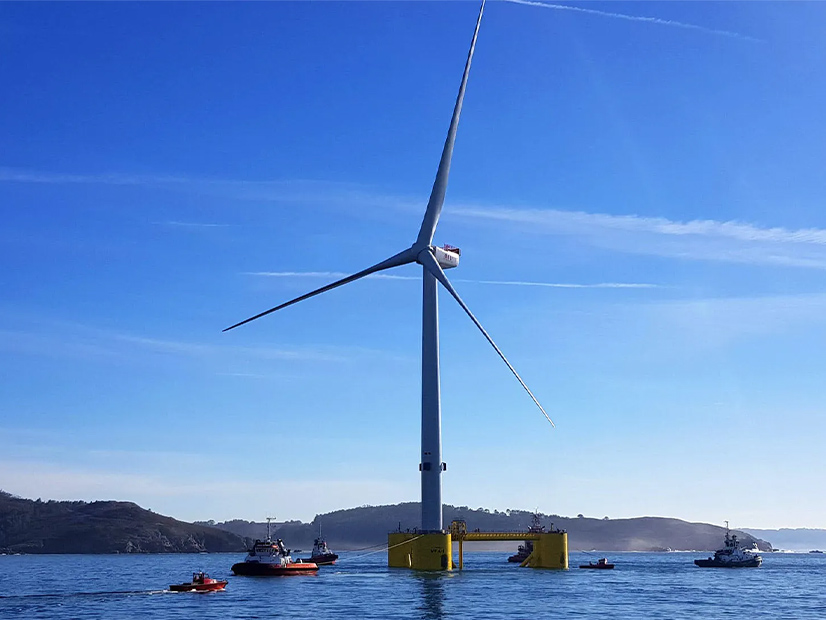
The California Energy Commission issued a draft report Friday that, if finalized later this month, would establish goals of building 3 GW of offshore wind by 2030 and 10 to 15 GW by 2045.
“These preliminary megawatt planning goals will inform the development of a strategic plan for floating offshore wind in federal waters off the coast of California,” the report says.
With technical advances, it might be possible to set a goal of 20 GW by 2050, the Energy Commission (CEC) said.
“CEC staff recognizes that by 2045 there may be sufficient technological developments and related cost reductions driven by innovation in floating offshore wind components such as advanced monitoring systems, mooring systems, flexible cabling and increased turbine size,” the report says. “Such technological developments could support a faster rate of offshore wind deployment that could potentially support a larger megawatt planning goal of up to 20 GW between 2045 and 2050.”
Assembly Bill 525, which took effect Jan. 1, requires the CEC to set offshore wind targets by June 1 and to coordinate with federal, state and local agencies to develop a strategic plan for offshore wind by June 30, 2023. The effort contributes to the state’s goal, under Senate Bill 100, to supply all retail customers with only clean energy by 2045.
The federal Bureau of Ocean Energy Management (BOEM) intends to hold the West Coast’s first offshore lease auctions later this year for the Morro Bay Wind Energy Area, off the coast of Central California, and for the Humboldt Bay Wind Energy Area, off the Northern California coast. (See BOEM to Offer Leases for Calif. Offshore Wind.)
BOEM expects Morro Bay to generate 3 GW and Humboldt to generate 1.6 GW. The areas are very different with respect to transmission, however, the CEC noted in its report.
“The North Coast wind resource is one of the best in the world with high renewable energy potential and wind speeds consistent and favorable for commercial development,” it says. “But the electric system in California’s North Coast region is relatively isolated from the California grid and serves primarily local community need. Additional transmission infrastructure will be needed to deliver offshore wind energy from this region to the grid.”
In contrast, “existing transmission on the Central Coast is robust and near large load centers,” the report says. “Near-term electric generator retirements, such as 2,225 megawatts from the Diablo Canyon Nuclear Power Plant, provide an opportunity to repurpose existing infrastructure to integrate wind energy developed offshore.”
Ports and infrastructure capable of handling massive floating wind turbines must still be developed, it said. (See West Coast Wind Faces Big Challenges.)
Potential effects of offshore wind on marine ecosystems, fisheries, Native Americans and national defense are being studied. BOEM said Thursday it had completed its environmental review of impacts to the Humboldt offshore wind area and found no significant impacts.
Early reaction to the CEC’s draft report was mostly positive.
Industry group Offshore Wind California said in a statement that the “ambitious multi-gigawatt goals set by the California Energy Commission in its draft AB 525 report are very encouraging news and an important milestone for the Golden State’s offshore wind industry.
“They show that California is serious about ‘going big’ on floating offshore wind … [and] send an important signal to the industry and other state and federal agencies that California is committed to moving forward expeditiously to make offshore wind power a reality,” the group said.
The CEC plans to host a public workshop on May 18 to discuss the draft report before it is finalized.


